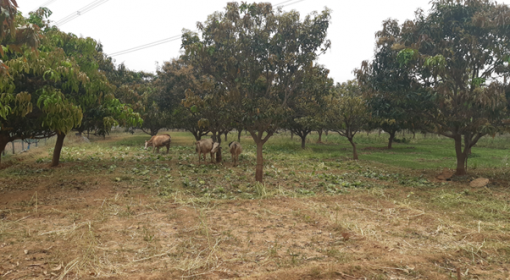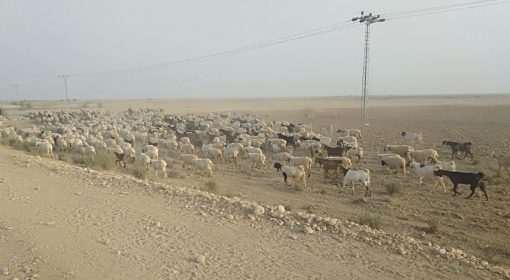By Ashfaque Ahmed Soomro and Frank van Steenbergen
Climate change has a major impact on human, but the impact on livestock is nothing less. An example are the 2022 floods in Pakistan: here more than one million animals lost their lives: especially of the larger animals, that could not be moved to safe grounds. It left many rural households without part of the sustenance of the family.
Besides the risk of being stranded during a flood, livestock is affected in many other dimensions of cropping in spate areas, livestock is a major livelihood resource, farmers are dependent on. Climate resilient livestock management has always been a challenge for the farmers, particularly in poverty stricken and climatically sensitive areas, like the spate irrigated areas, where heavy floods sometime cause troubles.
Global warming results varied intensity of climate events which leads to warmer and more intense summers. This substantially impacts on livestock productivity and therefore declined animal products such as milk because of high mortality and competition for limited fodder and water resources[1]. With rise in temperature and humidity, stress in animals has been increased leading to the incidence of various animal diseases.
During floods and rainy days, besides humans, animals suffer hugely and farmers take animals out of the houses and keep them either on the road sides/roads and at some raised points which are not meant for the animals, where animals become prone to diseases, particularly mosquitos and infestation due to dirty water intake.
Considering immediate challenges in milk productivity and animal reproduction as extreme temperature occurrence is likely to be more frequent in future too, therefore it is necessary to manage animal rearing environment and production to sustain the income earning for the vulnerable farmers.
Key Features of Resilient Shed / architecture
- It is designed on the principles on climate friendly animal living environment
- It is constructed with brick cement pillars: these can resist the lateral pressure of floods
- It is airy and well ventilated – making the sheds heat tolerant
- Its roof is made with thatched material and inner polythene sheet and a roof drain pipe which controls raining into the shed
- It has proper place for animal drinking water pots
- It has proper fodder eating place
- Animal to animal space is properly maintained in order to provide airy and easier space to animals move around and eat easily
Benefits of Climate Resilient Livestock Sheds
- Provide comfortable living environment to animals
- Reduces heat and coldness induced diseases in animals
- Improves health of animals
- Better and careful space and environment for baby animals/calves
- Heat tolerant cattle sheds enhance the livestock performance during heat stress conditions.
- Farmer can easily manage fodder and water intake to their animals
References
[1] Establishment of Climate Resilient Cattle Sheds For Better Livestock Production, by Dr. Mandeep Singh, 17 May 2022.




